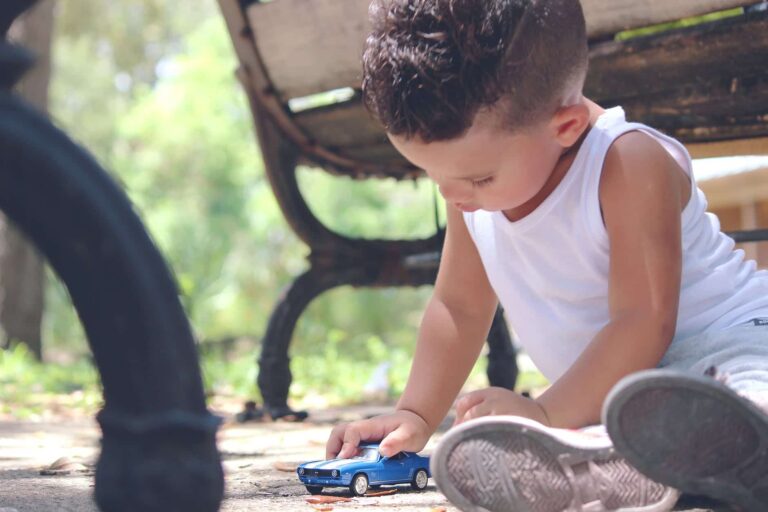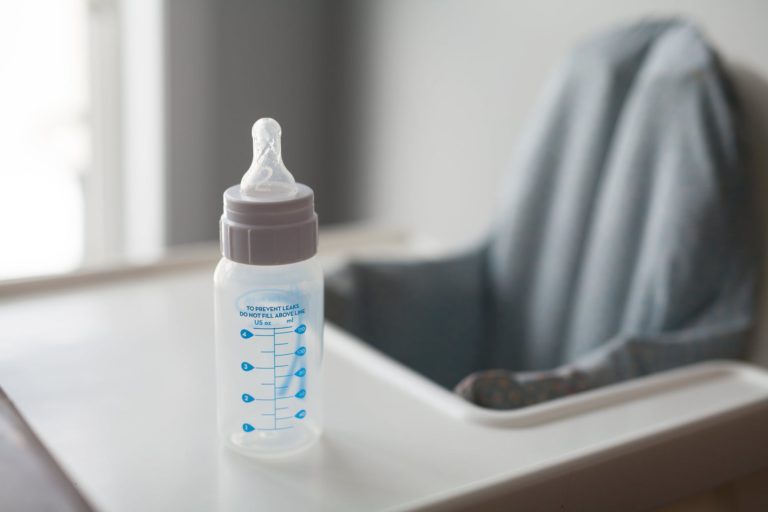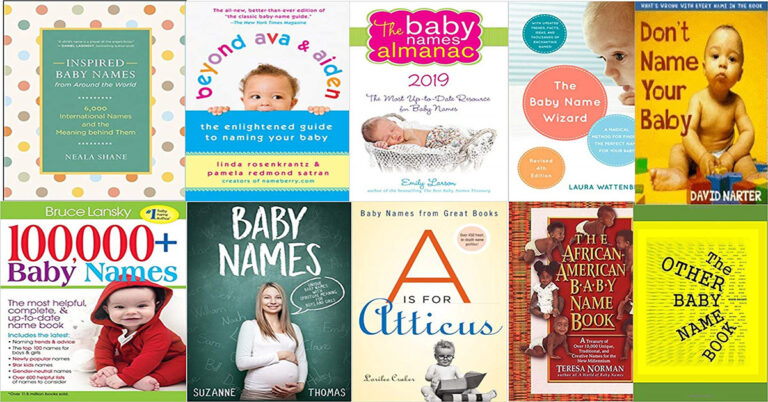Best Way To Take Baby Temp: In Brief
Knowing your baby’s temperature constitutes parenting and the health of your baby. To know the exact temperature of your baby, you will require a good digital thermometer. With so many options in the market, getting hold of the right one can be a daunting task. Well, we have you covered and take you through everything you need to know about best way to take baby temp through thermometers.
Thermometer basics: Taking your child’s temperature
First, we have the regular multi-use digital thermometers that are found in drug stores at low prices. They are easy to read and use, and not to mention them being super-fast- giving you the best results in under two minutes.
Most of these thermometers are used orally, under the arm or rectally. It is advisable that you designate your thermometer to one area of use to avoid spreading the bacteria to other organs. Also, note that taking the temperature of your child orally isn’t an option until they attain the age of four years.
The rectal method of taking temperature is the most accurate one, with the rectal thermometers being used in this case. Go for a rectal thermometer with a wide handle and a flexible tip that is less than an inch long. Penetrating it further inside your child’s rectum can perforate it.
There are other expensive thermometer options such as the temporal artery and ear thermometers that make use of a scanner to take the baby’s temperature. All you need to do is take a simple swipe over the baby’s forehead, and ear, and the temperature is measured. However, these thermometers are a bit difficult to use and might not be very accurate.
One thing to note is that whatever method you decide to go with, taking your baby’s temperature after a bath is a big No-No. During this time, the temperature is temporarily elevated. Best way to take accurate baby temp reading, it is advisable that you wait for at least 20 minutes before taking the temperature. The same is also true when the baby has been swaddled.
Lastly, we wouldn’t recommend the old fashioned glass thermometers. Shuttering and leaking their toxic mercury is easy and very dangerous around children. If you still own one, you should learn how to dispose of them properly.
Rectal Thermometer
Most children hate their temperatures being taken through their rectum, while others seem not to mind. If your baby is reluctant and protests against it, it is only prudent that you look for an alternative, such as the axillary thermometer. If the temperature reads above 99 degrees Fahrenheit, you’ll require the rectal thermometer for an accurate and more precise result.
To use the rectal thermometer, you first need to clean its end using alcohol or soap and warm water. Next, rinse using warm water. Afterward, coat its end using little petroleum jelly for easier insertion. You need to have the baby lie on her back, either on the bed, changing table, or even your laps.
Place the baby on a position you normally use when changing her diaper since she’d be more comfortable with this. Also, you’ll be able to distract her if she stares at you. Her legs need to be bent towards her chest. As earlier mentioned, the baby can also be on your laps with her bottom up and her tummy down. Let her legs dangle over your thighs.
Turn on the thermometer by pressing its button. Gently insert the bulb of the thermometer about half an inch inside into the rectum or until the tip disappears. Firmly grip the buttocks by cupping them using your fingers and palm. Also, continue holding the thermometer to avoid it falling out of place when the baby begins wriggling.
The thermometer will beep, and this means that it is time to take it out. Remove it and read your baby’s temperature. It is normal for your baby to poop after taking the thermometer out of her rectum, as inserting anything inside the rectum can stimulate the bowels. When you’re done, clean the thermometer using rubbing alcohol or soapy water, then rinse it ad dry before storing it.
Oral Thermometer
Press the button to turn on your digital thermometer. To measure the child’s temperature, you need to place the thermometer’s tip under the tongue towards the back of the mouth. Ask the child to keep her lips closed. The beeping will signal that it is time to take the thermometer out. If the child has been eating or drinking, it is advisable to wait for 15 minutes before you can measure the temperature orally.
Armpit Thermometer
Recording the baby’s temperature through the armpit is known as the axillary temperature. Many doctors recommend this thermometer as it is safe, easy, and convenient to use. Moreover, all that is required is a regular digital thermometer.
As convenient as this thermometer is, one downside lies with it- it is less accurate than other thermometers. Axillary temperature is external and can be 2 degrees lower than an internal temperature, such as the rectal thermometer. With this, this method isn’t recommended for children under the age of 3 months, where accurate recording is essential.
When using this thermometer, you first need to undress your baby halfway up the waist and sit her next to you, on your lap or cradle him. Keep her relaxed and occupied. You can give her a toy or a book or make her watch the TV.
Ensure that the underarm of your baby is dry. Gently, slip the bulb of the thermometer under her armpit. The bulb has to be in full contact with the skin. For this to happen, you need to hold your baby’s arm against her side firmly or alternatively bend and fold it across her chest. The thermometer will beep, and this means that it is time to take it out. Read the temperature of your baby.
Ear Thermometer
The ear thermometer is quick, safe, and very comfortable to use. The problem with this thermometer is that using it can be a little bit tricky, trickier than the digital thermometers. Failure to insert the thermometer correctly can result in inaccurate and inconsistent reading. Moreover, lots of earwax can result in the wrong reading. In this case, you need to be very cautious and careful when using this thermometer.
Doctors and pediatricians can help to show you how to use the ear thermometer. Also, the package comes with directions and instructions to follow for an accurate and consistent reading. We advise that you use the rectal thermometer to confirm your results. When you hit the mark consistently, you can rely on this thermometer.
Kindly note that the ear thermometer isn’t recommended for children under six months as the baby’s ear canals are narrow and difficult to insert the thermometer properly.
Temporal Artery (Forehead) Thermometer
For best way to take baby temp, Forehead thermometers are easy to use, and you shouldn’t have any difficulties handling them. You only need to follow the directions and instructions carefully. If there aren’t any directions provided, you can find them on the manufacturer’s website. Also, doctors and medical practitioners are available, and you can always turn to them for advice.
The basic technique of this thermometer includes positioning it at the forehead of your child between the hairline and eyebrow. Switch on the thermometer then maintain contact with the child’s skin. To obtain the temperature, you need to swipe it in a straight line across the forehead and not down the face.
Lift the thermometer off the skin as you still pressing the button. You can now release the button and read the temperature. Artery thermometer works in a sophisticated manner. It basically records the temperature of an artery close to the skin’s surface in the forehead.
Safety Tips
Did you know that your child’s age determines the type of thermometer to use and the method of measuring temperature? Well, here are some of the safety tips and guidelines to follow when taking your child’s temperature
Age Guidelines
Birth to 3 months
Use the normal digital thermometer for measuring the temperature through the rectum. A temporal artery thermometer is also recommended for newborns for high levels of accuracy.
3 months to 4 years
This age bracket allows you to use the rectal, armpit, or temporal artery thermometer to measure your child’s temperature. You should, however, wait till the child is six months for you to use the ear thermometer. The rectal thermometer is still the best due to its high levels of accuracy.
4 years and older
Kids who are above four years can hold a digital thermometer to measure the temperature orally. You can also use the armpit, ear, and temporal artery thermometers in this age bracket.
FAQ
Q.) How do I take my child’s temperature?
Ans. For children under the age of 3, taking the temperature through the rectum is the most accurate method. For kids above 3, you can take the temperature through the forehead and orally. Measuring the temperature through the armpits and ears are other options, but aren’t highly recommended as they aren’t very accurate.
Q.) Where do you check a baby’s temperature?
Ans. The common places to take your baby’s temperature are the armpit, mouth eardrum, forehead, and rectum. The method to settle for depends on the age of the child and what is easier for you. However, the most accurate method is through the rectum. Also, eardrum and oral temperatures are accurate when done correctly, and when the child is of age. The forehead and armpit temperatures are the least accurate but are good options if you’re screening for fevers.
Q.) What is an unsafe temperature for a baby?
Ans. We cannot tell you what temperature is unsafe for your baby, but we can tell you what temperature is safe for your baby. The normal temperature for a baby is between 98.0 and 99.0 degrees Fahrenheit (under the armpit). It is normally lower during the morning but rises later in the day. The temperature of your baby could go up slightly when she has too many clothes on, when she is outside on hot weather or when taking a bath.so, keep an eye for the temperature not to go above or lower than this.
Q.) How can I make sure the reading is accurate?
Ans. For an accurate reading, strictly follow the guidelines that come with the package. If you measure orally, ensure that the child is breathing normally. For a rectal thermometer, do not insert the tip more than an inch long.
Q.) How many degrees do you add when you take a temperature under the arm?
Ans. Measuring temperature using the armpit isn’t highly accurate. There is a marginal error of 0.5 to 1.0 degree Celsius when compared to the rectal temperature.
Q.) What causes fever in children?
Ans. A fever is 100.4 degrees Fahrenheit and above. Some of the causes of fever in children include allergies, heat exposure illnesses, illicit drugs, medications, viral infections like flu and bacterial infections.
Q.) What should I do if my baby has a fever?
Ans. Do not panic when your baby has a fever. The first thing to do is to take a close look at them. If they’re interactive, alert, and occasionally playful, then they are okay. But if the child is irritable, has difficulties in eating and breathing, or her mental status is altered among other concerns, then you should take them to a doctor immediately.
When to See a Doctor
As fever is common in children so you should learn best way to take baby temp. But fever doesn’t necessarily imply that it is bad. On the contrary, fever plays a significant role in fighting infections. If your child is above six months and is sleeping well, plays normally, and takes plenty of fluids, then there is no need to treat fever. A child is considered to have a fever is
- The rectal temperature is 100.4 degrees Fahrenheit and above
- The oral temperature is 100 degrees Fahrenheit and above
- The armpit temperature is 99 degrees Fahrenheit and above. The armpit method is normally not highly accurate, and you might want to confirm the results using other methods.
Doctors should be consulted when
- Children under the age of 3 months have rectal temperatures of 100.4 degrees Fahrenheit and above.
- Children between 3 and 6 months have temperatures of 102 degrees Fahrenheit and above
- Children between 6 and 24 months have temperatures above 102 degrees Fahrenheit that last more than a day. If the child develops signs like cold and diarrhea, you should see the doctor sooner, depending on the severity of the signs.







